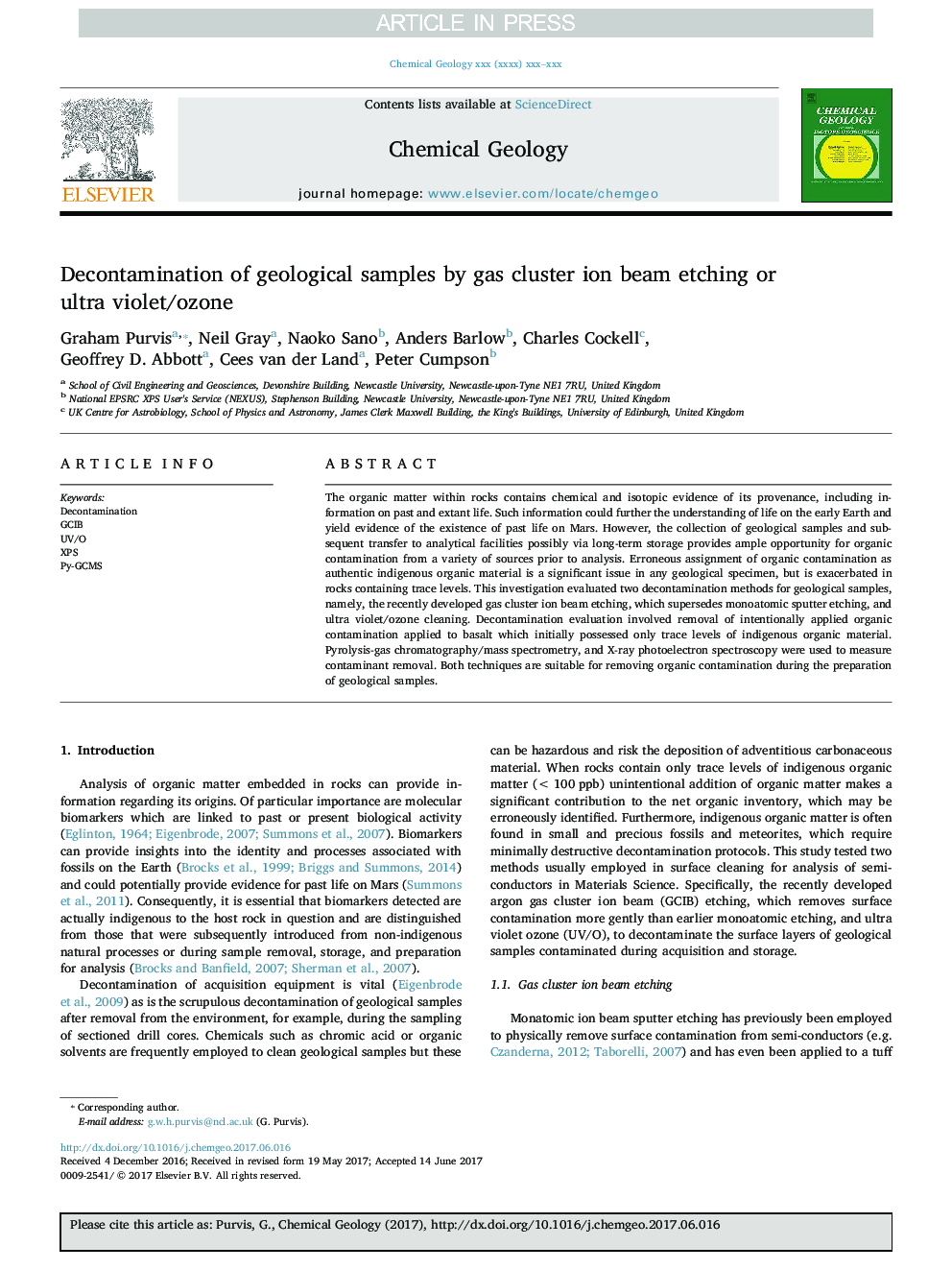| Article ID | Journal | Published Year | Pages | File Type |
|---|---|---|---|---|
| 5782833 | Chemical Geology | 2017 | 7 Pages |
Abstract
The organic matter within rocks contains chemical and isotopic evidence of its provenance, including information on past and extant life. Such information could further the understanding of life on the early Earth and yield evidence of the existence of past life on Mars. However, the collection of geological samples and subsequent transfer to analytical facilities possibly via long-term storage provides ample opportunity for organic contamination from a variety of sources prior to analysis. Erroneous assignment of organic contamination as authentic indigenous organic material is a significant issue in any geological specimen, but is exacerbated in rocks containing trace levels. This investigation evaluated two decontamination methods for geological samples, namely, the recently developed gas cluster ion beam etching, which supersedes monoatomic sputter etching, and ultra violet/ozone cleaning. Decontamination evaluation involved removal of intentionally applied organic contamination applied to basalt which initially possessed only trace levels of indigenous organic material. Pyrolysis-gas chromatography/mass spectrometry, and X-ray photoelectron spectroscopy were used to measure contaminant removal. Both techniques are suitable for removing organic contamination during the preparation of geological samples.
Keywords
Related Topics
Physical Sciences and Engineering
Earth and Planetary Sciences
Geochemistry and Petrology
Authors
Graham Purvis, Neil Gray, Naoko Sano, Anders Barlow, Charles Cockell, Geoffrey D. Abbott, Cees van der Land, Peter Cumpson,
